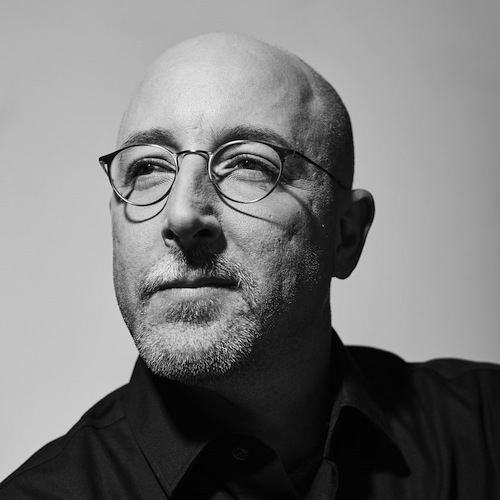AXIOM impresses in Abrahamsen’s haunting “Schnee”

Jeffrey Milarsky led AXIOM in Hans Abrahamsen’s “Schnee” Friday night at the Peter Jay Sharp Theater. Photo: Peter Konerga
Two years have passed since the Cleveland Orchestra and soprano Barbara Hannigan brought Hans Abrahamsen’s award winning Let Me Tell You to New York City. Events like that—the local premiere of a much-talked-about work—tend to set a figure on fire on the New York scene. Yet often they burn brighly but briefly.
While Let Me Tell You is a fine work, Abrahamsen’s greatest achievement so far is Schnee, for a nine-piece ensemble. This 2008 piece is, more than any other, the one that will likely cement his reputation for posterity.
In AXIOM’s last concert of the season Friday night at the Peter Jay Sharp Theater, the Juilliard new music ensemble, led by Jeffrey Milarsky, played Schnee, an ambitious performance that capped a run of concerts that have been some of the finest of the last several seasons.
Unlike most professional groups, AXIOM, being a student ensemble, has a rotating complement, as the young musicians earn their chamber music credit and move on to other things. Notwithstanding the type of talent that flows through Juilliard, this can risk disaster when tackling music like Schnee.
Abrahamsen’s gripping piece is difficult in the subtle ways of the most challenging music. It creates a unique sense of time and beauty, and does so via tremendous complexity in ensemble playing.
Schnee is a series of Canons broken up by Intermezzi, with a distorted mirror image ensemble that has a piano, violin, viola, and cello on one side of a percussionist, and a second piano with flute, clarinet, and oboe on the other. The Canons are played inside and between each smaller group.
These are not Bach’s Canons; Abrahmsen’s are tiny, the repetitions come at uneven and often extremely close temporal intervals. The basic musical material is as often timbre and rhythm as pitch.
This is clothed in an ascetic beauty similar to that found in Arvo Pärt’s music. It is a spun-glass sound. (Schnee means snow, and there is the feeling of falling snow quieting the landscape) The music is less about harmony and diatonicism than Pärt, yet there is the thread of a well-crafted, haunting theme running through it.
Schnee is a powerful experience with a deep range of expression. For the musicians, there are exceedingly complex rhythms (like syncopated thirty-second note triplets) set in opposition to each other, and the need to focus on both the expressive intensity and the quiet dynamics of the music.
The student musicians were once again tremendously impressive. There is a superb recording of this piece from the Ensemble Recherche that will probably take years of familiarity with the music to better. AXIOM played Schnee differently—there is so much in the music that this can and should happen—with less swing than Recherche and more obstinate determination. That was a fine experience for Schnee, which often sounds like the equivalent of the sands of time running out.
There were some passing moments when the rhythms seemed tense, lacking in confidence, and the Intermezzi were not perfect. Abrahmsen made them as stretches where one first thinks the musicians are tuning up, then realizes they are playing the piece, and Friday night the tuning up didn’t quite come off.
On top of the technical challenges, there is the difficulty in engaging with what the music does. This is not so hard for the listener–there is so much alluring, eerily gorgeous sound in the piece that the ear opens immediately. But for the musicians, the problem is how to think about it so that the expressive ideas come through.
That was the most impressive part of the performance, the directed intent and sense of purpose behind the playing. In the denser canons, like 2a and 2b, the ensemble sounded like master builders, erecting a complex and important structure. In the desolate Canon 3b (for the two pianos and a percussionist scraping a piece of paper across a table, marked “In Tai Chi tempo”), there was the feeling that the musicians were using metaphors to describe some incomprehensible thing.
Milarsky maintained exact tempo and subdivisions, cued as needed, but essentially let the musicians jump into deep waters, from where they all swam confidently to the shore.


